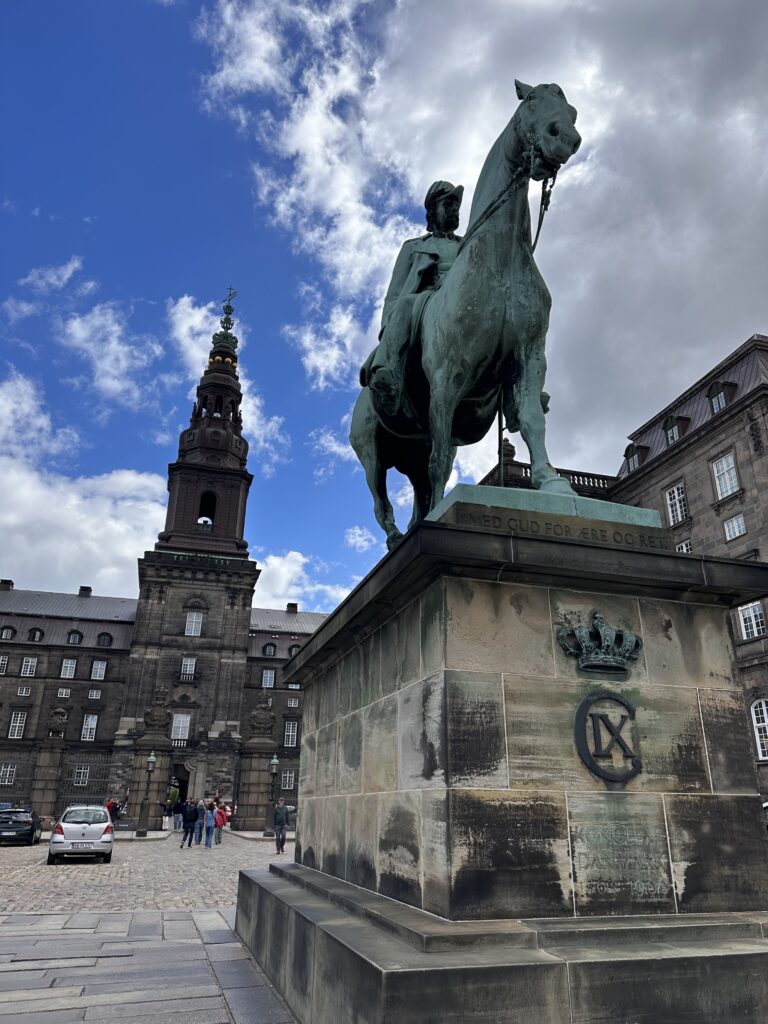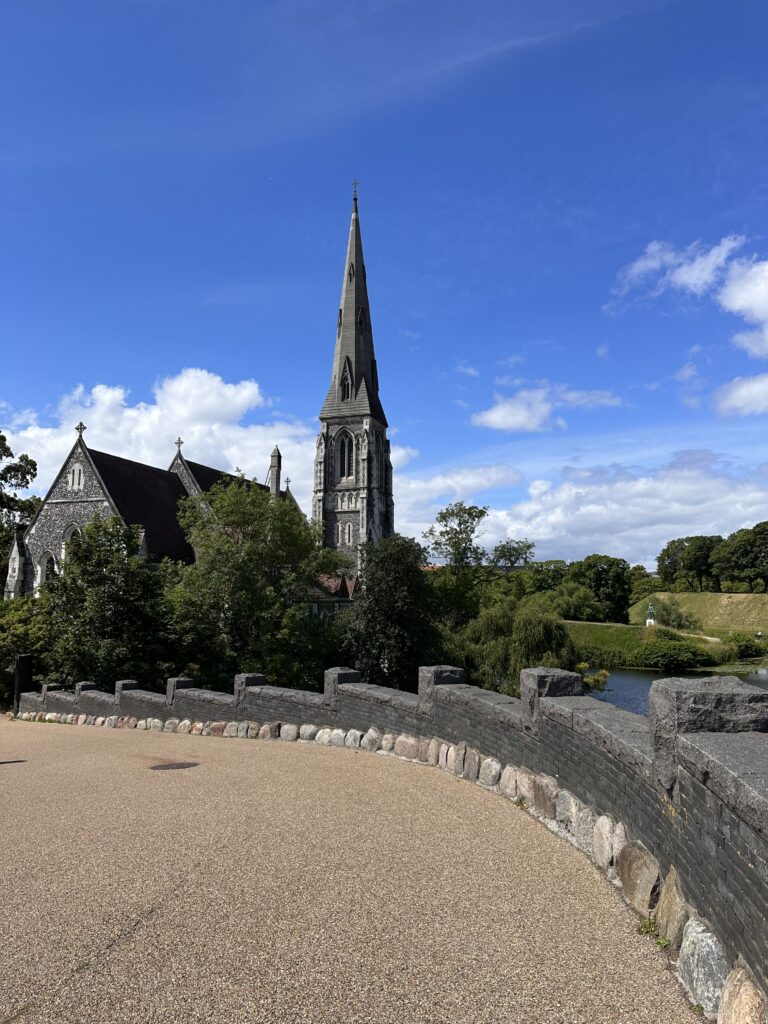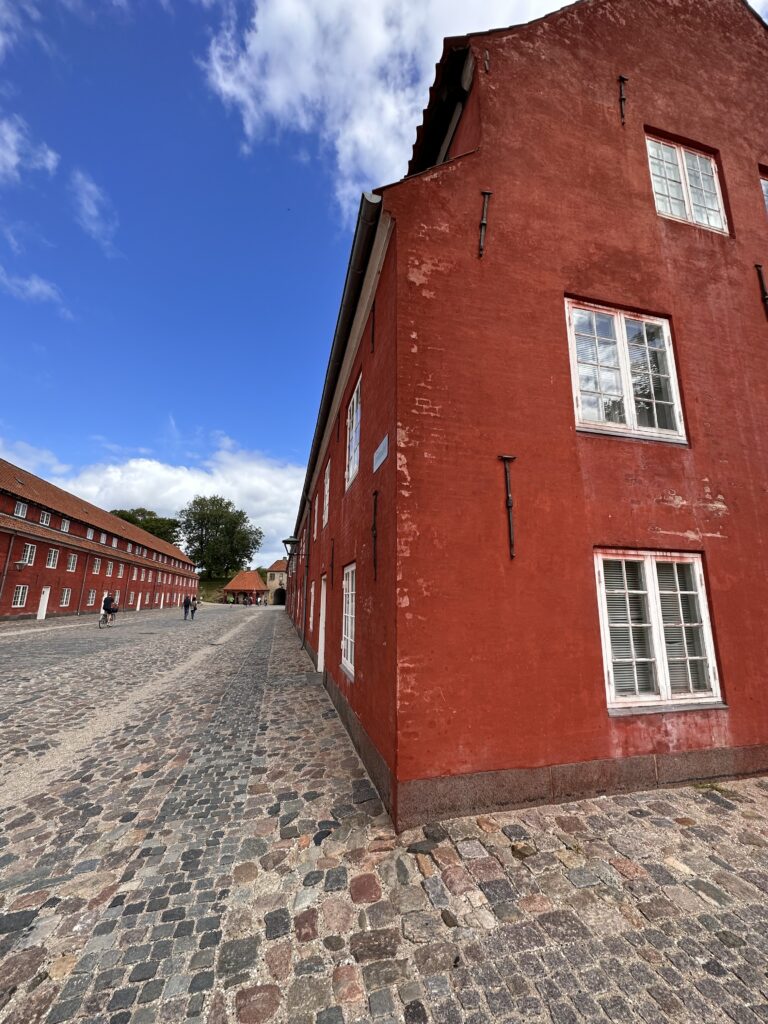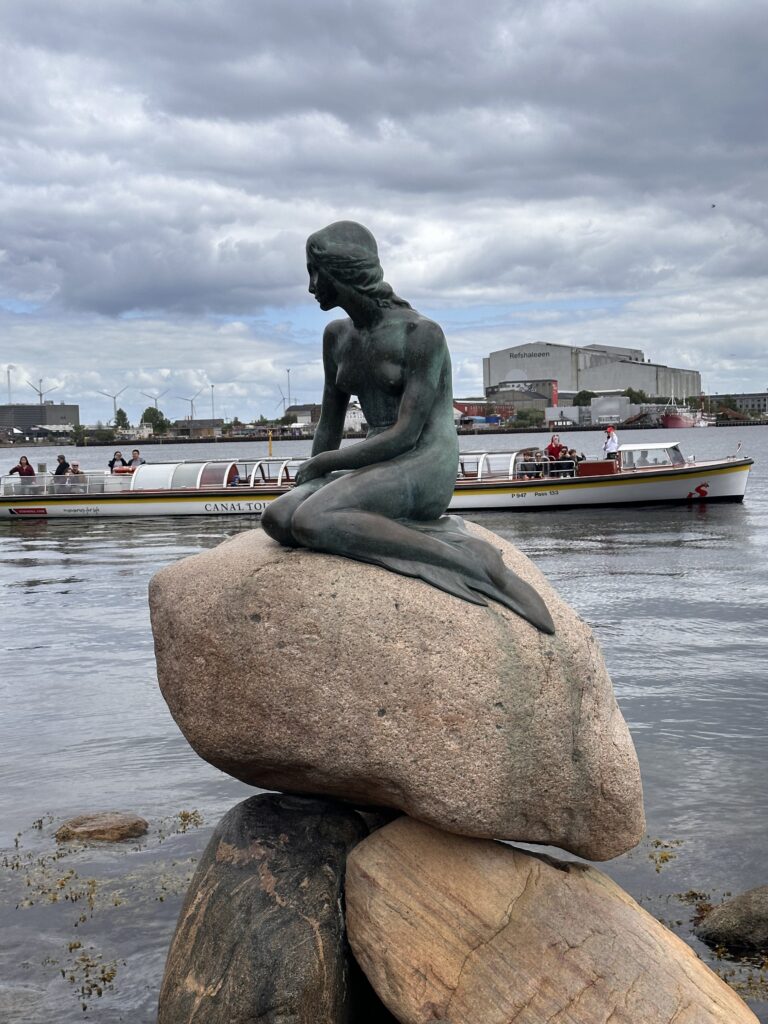Our second stop on the cruise was Copenhagen, the charming capital of Denmark. Copenhagen is a city where history, culture, and modernity blend seamlessly. From its stunning architecture and picturesque canals to its vibrant art scene and rich history, Copenhagen offers endless inspiration for travelers who love history and architecture alike. I opted to use the Hop on Hop Off buses available in the city, and I was so glad I did. I was able to cover a lot more ground, and see more of the attractions than if I had walked the city. With cruising, we were only in port about 8 hours, so we need to use the time we have on shore wisely.
The History of Copenhagen
Copenhagen’s history is as enchanting as its fairy-tale-like atmosphere. Founded in the 10th century as a Viking fishing village, it grew into a major center of trade and commerce by the Middle Ages. The city has witnessed centuries of transformation, from the grandeur of the Renaissance to the innovations of the modern era. Its historical charm is evident in every cobblestone street and historic building.
Museums and Attractions:
Tivoli Gardens:
One of the world’s oldest amusement parks. Tivoli Gardens is more than just rides and games. It’s a cultural landmark where concerts, theater performances and seasonal festivities take place. The park’s enchanting atmosphere inspired Walt Disney himself. Tickets are required and you can learn more HERE.
Christiansborg Palace:
The seat of the Danish Parliament, Christiansborg Palace, offers a glimpse into the heart of Danish politics and royalty. Visitors can explore the royal reception rooms, the ruins under the palace, and the Tower, which provides panoramic views of the city. Tickets are required, and you can purchase them when you arrive at the Palace. More ticket info HERE.

St Alban’s Church:
St. Alban’s Church, also known as the English Church, is a historic Anglican church situated in Copenhagen, Denmark. Built between 1885 and 1887, it was designed by English architect Arthur Blomfield in the Gothic Revival style. The church features a picturesque setting beside the Kastellet, with its striking spire and traditional stone exterior adding to the charm of the area. St. Alban’s Church serves the Anglican community in Denmark, providing a welcoming place of worship and community for expatriates and visitors, while also being a notable architectural landmark in the city.

The Citadel:
A short walk from St Alban’s Church is The Citadel in Copenhagen, known as Kastellet, a well-preserved star-shaped fortress located near the city’s harbor. Built in the mid-17th century under the reign of King Christian IV, Kastellet served as a crucial defensive structure. The citadel features characteristic bastions, moats, and historic buildings, including a church and a windmill. Today, it functions as a military barracks and a public park, attracting visitors who enjoy its scenic surroundings, historical significance, and the opportunity to explore one of Europe’s finest examples of Renaissance military architecture.

The Little Mermaid:
The Little Mermaid statue in Copenhagen is a world-renowned symbol and one of Denmark’s most famous landmarks. Situated at Langelinie promenade, the bronze statue was unveiled in 1913 and is inspired by Hans Christian Andersen’s fairy tale of the same name. Sculpted by Edvard Eriksen, the statue depicts a mermaid sitting on a rock, gazing wistfully at the shore. Despite its modest size, the statue draws millions of visitors each year. Over the years, it has endured various acts of vandalism and political protests, yet it remains a beloved cultural icon, embodying the enchanting spirit of Andersen’s timeless story.

Copenhagen is a wonderful city, and only saw a small portion of the attractions in this amazing city. If you are planning on visiting you definitely could use more than 8 hours to explore this city.

